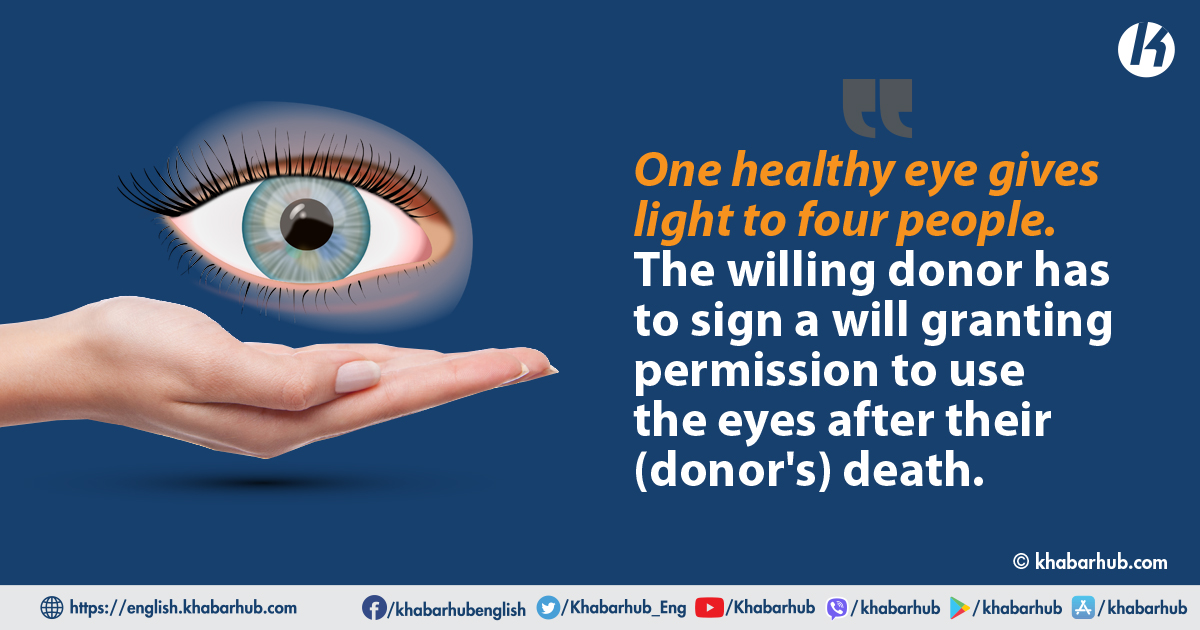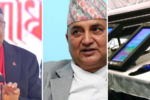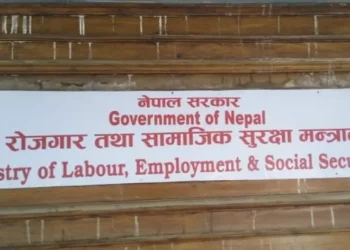KATHMANDU: People with healthy eyes can donate their pupils after death. One healthy eye gives light to four people. The willing donor has to sign a will granting permission to use the eyes after their (donor’s) death.
Eyes extracted within eight hours after the death of the donor restore visions to four people living in the dark.
Nepal Eye Bank has now launched the technology of providing vision to four people from two eyes donated by one person. Nepal Eye Bank, located at Tilganga Eye Foundation, started providing vision to four people from two eyes of one person a year ago.
Eye specialist Dr. Rita Gurung regards the advanced technology used for eye transplantation as a big leap.
“Eye transplant in Nepal has taken a big leap in a short time,” Dr. Gurung said, adding, “Initially, the number of eye donors was very small, but with the encouraging success in transplantation and awareness among the donors, the number of people donating organs is increasing of late.”
With the increase in the number of eye donors, the long wait for transplantation is decreasing. According to the eye bank, 6,259 eyes have been transplanted in 27 years.
Transplantation possible within 14 hours of the donor’s death
Corneal transplantation has become the main solution for various eye problems such as congenital eye problems, vitamin A deficiency, injuries, and infections.
According to the Nepal Eye Bank, more than 500 to 1300 eye transplants are performed annually.
The ophthalmologists claim that corneal transplants are becoming more convenient than other organ transplants, as transplants are usually performed up to 14 hours after death.
“Since there is no blood transfusion in the cornea, cornea taken from people of any age group and health condition can be transplanted to another person, so the number of transplants is high,” transplantation expert Lina Bajracharya told Khabarhub.
Big leap in eye transplantation
Eye transplantation started in Nepal in the 1990s has made a big leap in a short time. Corneal transplantation was started for the first time on 19 November 1994, when Chinimaya Tuladhar of Dhokatol, Kathmandu donated an eyeball. Since then, more than 11,000 people have donated corneas. According to the Nepal Eye Bank, only two pupils were donated in the initial year.
The largest corneal donation since then was in 2019. In one year alone, 1,348 corneas were donated to the eye bank. However, with the onset of the coronavirus epidemic, both cornea collection and transplantation at the eye bank have declined. In 2020, only 625 pupils were collected. According to the Eye Bank, the bank received 801 eyeballs in 2021 and 93 till now in 2022.
The transplantation failure rate is low in Nepal
Problems with the cornea are one of the leading causes of cataracts. Corneal transplantation in Nepal seems to be 52 to 93 percent successful. However, depending on the health condition of the person receiving the organ, there is a possibility of rejection at any time after the transplant.
“Even after ten years of transplantation, there is a possibility of rejection due to the reaction of the tissues. For this, a regular eye examination should be done every one month during the first year after the surgery and every two to six months at regular intervals after one year,” experts said.
Dr. Gurung says that the steroid drugs used after surgery are likely to reduce the body’s immune system, so there is a strong possibility of infection.
“As it takes up to a year to open the stitches made during surgery, the length of the treatment process increases the risk factor and not all transplants are successful,” she informs, alerting, “Therefore, patients should always be in a state of readiness for treatment.”
How do one person’s eyes fit four people?
After the death of a person who has filled the will form for eye donation, the representative of Nepal Eye Bank removes the pupil of their eye within 8 hours of death.
After the pupil of the deceased’s eye is removed, eye bank technicians test for diseases including HIV, hepatitis B, C, and syphilis. If all of these tests result in a negative report, another test is performed to determine if the eye is suitable for use.
Examination of the cells in the pupils
While conducting the test if the condition of the cells in the pupil of the eye is found normal and transplantable tested, the eye is taken to the eye bank’s ‘Lymilar tissue processing room.’
and the eye can be transplanted, the new tech
According to Dr. Yajan Raj Bhandari, an eye banking trainer at the Bank, the process of preparing one person’s eyes for 4 people takes nearly 20 minutes. “An eye has five layers,” says Dr. Bhandari explaining the eye structure, “the eye prepared using the lymilar tissue processing technology can be placed on the upper or lower part of the eye and restore vision in the eyes.” It is said that the lens prepared this way has better vision than others.
“Since last year, we have been using this technology to provide sight to 4 persons from 2 eyes. We have to handle the procedure very rationally, considering the delicacy and sensitiveness of the issue.” Trainer Bhandari further added.
Tissue processing
According to Dr. Bhandari, a machine consisting of nitrogen gas is used to cut the layers of the eyes. The gas cuts through the layers of the eye through a ‘turbine’. Hence, the technicians working in tissue processing should extract the layers very sensitively.
Bhandari said that one has to cut the layers within 2-4 seconds.
The thickness of the eyelids is measured before and after cutting the layers. The device used to measure the thickness is called a pachymeter. The technician decides which part is the front and which rear and colors them accordingly.
Separating eye layers through a turbine
According to Bhandari, an eye bank trainer, the eyes can be provided to many people by separating the donor eye from the tissue processing technology.
“We use this technology to separate the layers of the eye to provide sight to the visually impaired eye patient. One eye donated by a donor can be used in upper and lower level surgeries by separating it into two layers,” Dr. Bhandari told Khabarhub.
Pupils ready for donation
80,000 Nepalis have expressed their commitment to donate eyes. Before 1994, no Nepali could get their eyesight restored if transplantation was required.
After the establishment of the Nepal Eye Bank at Tilganga Eye Foundation, those who lost their eyesight due to cataracts and various other reasons started getting their visions restored in Nepal. According to the Eye Bank, Chinimaya Tuladhar from Kathmandu was the first to donate eyes. He is the first person to donate both eyes for the first time.
At present, 10 eye hospitals including Tilganga Eye Hospital and TU Teaching Hospital are conducting eye transplants across the country. According to doctors, awareness about eye donation has made eye transplantation relatively easier these days.
“Initially, the number of eye donors was very low, so the patients had to wait long to get their turn for transplantation; however, the increasing number of donors has shortened the waiting periods,” Dr. Rita Gurung said.









Comment